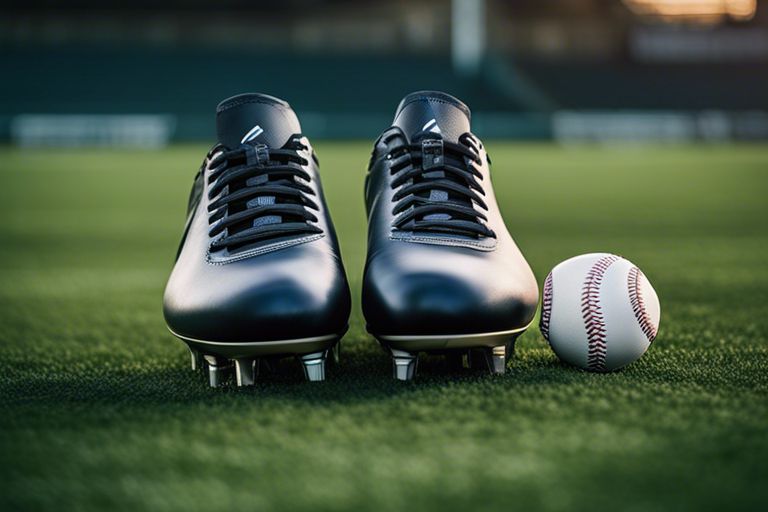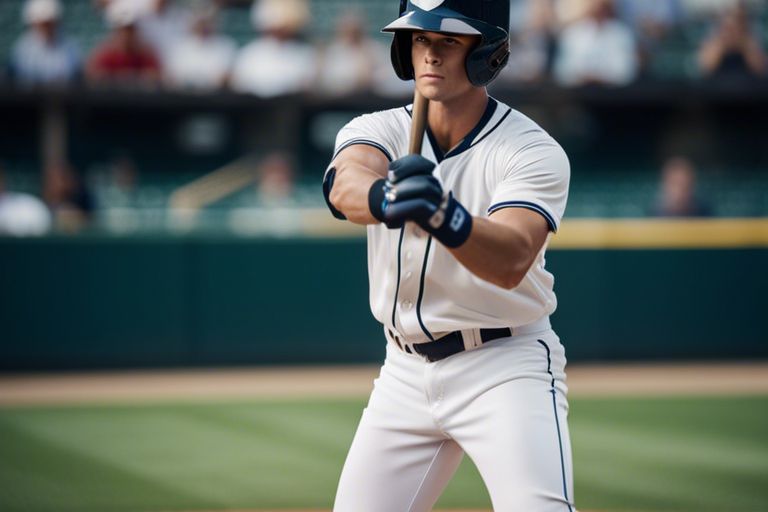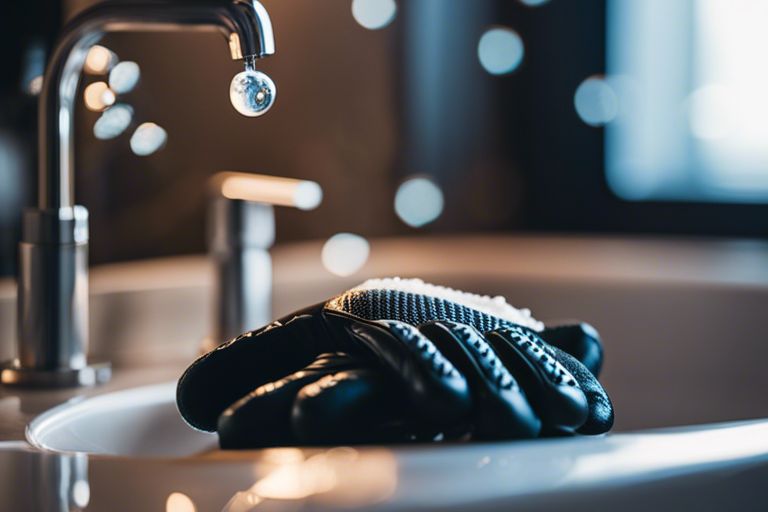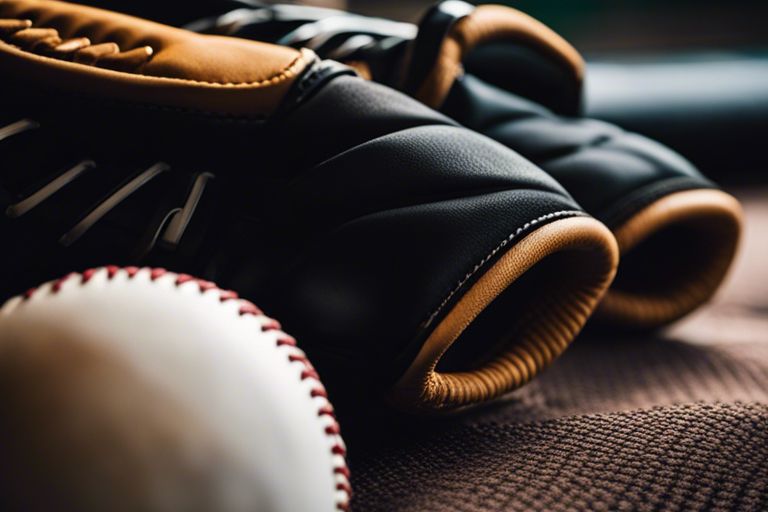Just like the sports they are designed for, football and baseball cleats are tailored to meet the specific demands of each game. While both may look similar at first glance, subtle differences in design and functionality make them unique to their respective sports. Understanding these distinctions is key for athletes looking to perform at their best on the field. Let’s break down the key differences between football and baseball cleats to help you choose the right footwear for your game.
Key Takeaways:
- Design: Football cleats typically have studs on the outsoles for traction and stability, while baseball cleats have a mix of metal and molded cleats for better grip.
- Usage: Football cleats are designed for playing on grass or turf, providing support for sudden stops and direction changes, while baseball cleats are optimized for running on dirt and grass surfaces.
- Comfort: Football cleats have more padding and ankle support to withstand impact and aggressive movements, while baseball cleats are more lightweight and flexible for quick sprints and agility on the field.

Overview of Cleats
Purpose of Cleats in Sports
For athletes in sports like football and baseball, cleats are an crucial piece of equipment designed to provide traction on grass and dirt surfaces. These specialized shoes help the players navigate quick movements, sharp turns, and sudden stops with better grip and stability.
General Design and Features
Purpose-built cleats for football and baseball differ in their design and features to cater to the unique demands of each sport. Football cleats are designed with larger studs to provide traction on grass fields and support for lateral movements, while baseball cleats have smaller studs and a toe cleat to assist in quick bursts of acceleration and running around bases.

Football Cleats
Design Characteristics
With a focus on providing traction and stability on grass or turf surfaces, football cleats are designed with molded studs or metal spikes. The upper portion of the cleat is often made of leather or synthetic materials to offer durability and support during the game.
Types and Variations
One of the key differences lies in the types of cleats used for different playing positions. Linemen typically wear cleats with more substantial traction and ankle support, while skill position players opt for lighter, more flexible cleats for speed and agility. Understanding the specific needs of each player on the field is crucial when selecting the right football cleats.
| Molded Studs | Suitable for grass fields and provide excellent traction. |
| Metal Spikes | Offer superior traction on soft or muddy surfaces. |
| High-Top Cleats | Provides increased ankle support and stability. |
| Low-Cut Cleats | Lightweight and ideal for speed positions. |
| Custom Cleats | Designed for specific player preferences and playing styles. |

Baseball Cleats
Design Characteristics
With a focus on traction and stability, baseball cleats are designed with metal or molded spikes on the sole. The spikes help players grip the grass or dirt on the field, allowing for quick acceleration and sudden stops.
Types and Variations
For baseball cleats, there are two main types to choose from: metal cleats and molded cleats. Metal cleats provide excellent traction on dirt and grass but are not allowed in all leagues due to safety concerns. Molded cleats, on the other hand, are versatile and can be used on a variety of surfaces.
- Metal Cleats – Provide excellent traction on dirt and grass surfaces.
- Molded Cleats – Versatile option suitable for different playing surfaces.
- Turf Shoes – Designed for artificial turf fields, offering grip and comfort.
- Trainer Cleats – Multi-purpose shoes for practice and training sessions.
- Interchangeable Cleats – Cleats that allow players to switch between metal and molded studs based on the playing surface.
Any player looking to invest in a pair of baseball cleats should consider the type of spikes they need based on the playing surface and league regulations. Proper footwear can enhance performance and prevent injuries, making it important to choose cleats that suit your playing style.
| Metal Cleats | Provide excellent traction on dirt and grass surfaces. |
| Molded Cleats | Versatile option suitable for different playing surfaces. |
| Turf Shoes | Designed for artificial turf fields, offering grip and comfort. |
| Trainer Cleats | Multi-purpose shoes for practice and training sessions. |
| Interchangeable Cleats | Cleats that allow players to switch between metal and molded studs based on the playing surface. |
Key Differences Between Football and Baseball Cleats
Keep Difference Between Football And Baseball Cleats in mind while selecting appropriate footwear for your game. Understanding the distinctions between football and baseball cleats can enhance your performance and overall experience on the field.
Cleat Pattern and Function
Differences in cleat patterns and functions between football and baseball cleats exist due to the unique demands of each sport. Football cleats often have a higher ankle cut for better support and traction on grass, while baseball cleats have a more pointed front cleat for agility on dirt and grass.
Material and Build Differences
One significant difference between football and baseball cleats lies in their material and build. Football cleats are typically made of synthetic materials to withstand the impact and stress of the game, while baseball cleats are crafted with softer leather or synthetic materials for more flexibility and comfort during running and lateral movements.
This distinction in material and build impacts the overall performance and comfort level of the cleats, catering to the specific needs and movements required in football and baseball. Understanding these differences can help you choose the right cleats for your preferred sport.
Summing up
Considering all points, the key difference between football and baseball cleats lies in their design and functionality. Football cleats are designed for traction on grass and turf, with studs that provide stability for quick cuts and turns. On the other hand, baseball cleats are optimized for grip and speed on dirt and clay surfaces, with metal or plastic spikes to dig into the ground. Understanding these differences is crucial for athletes looking to perform at their best in their respective sports.
FAQ
Q: What are Football cleats designed for?
A: Football cleats are specifically designed for traction on grass and turf surfaces. They have studs or spikes on the soles to provide grip and stability during quick changes in direction, acceleration, and deceleration common in football.
Q: How are Baseball cleats different from Football cleats?
A: Baseball cleats are designed with a different stud configuration compared to football cleats. They have metal or molded plastic spikes that are longer to provide better traction on dirt and grass fields. Baseball cleats are also designed to support the ankle during lateral movements when fielding and running the bases.
Q: Can you use Football cleats for Baseball or vice versa?
A: While it is possible to use football cleats for baseball or vice versa in a pinch, it is not recommended. Football cleats may not provide enough traction on dirt and grass baseball fields, leading to slips and falls. Similarly, baseball cleats may not offer the necessary support and stability required for the quick, high-impact movements in football. It is best to use the appropriate cleats for each sport to optimize performance and prevent injuries.




